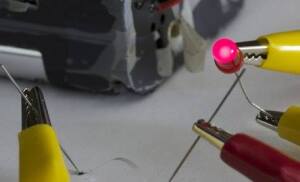by
Lisa Chamoff, Contributing Reporter | May 21, 2015
Forget watches. An international team of scientists has developed a technique to embed graphene electrodes into fibers that are used in the textile industry, laying the foundation for the creation of lightweight clothing containing computers, phones, and even patient monitors.
The research, conducted by scientists from the Centre for Graphene Science at the University of Exeter, the Institute for Systems Engineering and Computers, Microsystems and Nanotechnology in Lisbon, the Universities of Lisbon and Aveiro in Portugal, and the Belgian Textile Research Centre, was recently published in the journal Scientific Reports.
Transparent and flexible electrodes are already widely used in plastics and glass, but this is the first example of a textile electrode being truly embedded in a yarn, Monica Craciun, a professor at the University of Exeter and co-author of the research, said in a statement.
“The possibilities for its use are endless, including textile GPS systems, biomedical monitoring, personal security or even communication tools for those who are sensory impaired,” Craciun said. “The only limits are really within our own imagination.”
The researchers grew graphene – which is strong, flexible, and the thinnest substance capable of conducting electricity – on copper foil using a method called chemical vapor deposition. The team then created a technique to transfer graphene from copper foils to a polypropylene fiber commonly used in the textile industry.
“This breakthrough will also nurture the birth of novel and transformative research directions benefitting a wide range of sectors, ranging from defense to health care,” said Saverio Russo, a co-author of the research and also a professor at the University of Exeter.
Responding to the research, Dr. Steven Steinhubl, director of digital medicine at the Scripps Translational Science Institute, says clothing that monitors heart rate, breathing, and activity levels by using sensors sewn into fabric has already been developed by companies such as OMsignal, but most of what is already on the market isn’t very comfortable and is mainly targeted at athletes.
“It’s something that, at least for me, I looked forward to taking off,” Steinhubl told DOTmed News.
Clothing with conductive threads could potentially be used to evaluate limb motion in people with arthritis, and monitor fetal activity in pregnant women, and blood flow in patients with vascular problems, Steinhubl said.
“It’s really spectacular if the clothing is comfortable and washable,” Steinhubl said.
Back to HCB News
